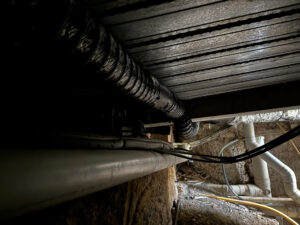Keeping your home’s ventilation system in top condition is crucial for ensuring optimal performance and maintaining good indoor air quality. Many of us understand the importance of a well-functioning ventilation system, but might not be sure about the best ways to maintain it. That’s where we step in—to guide you through understanding your system and keeping it running smoothly.
A well-maintained ventilation system not only provides a comfortable environment but also improves the health of everyone in the household by filtering out pollutants and maintaining adequate moisture levels. Regular maintenance can also prevent costly repairs in the future and extend the life of your system.
Whether you’re a new homeowner or a seasoned resident, understanding a few key maintenance strategies can make a significant difference. Let’s dive into the basics of home ventilation and discuss how regular upkeep can elevate your home’s air quality and system efficiency.
Understanding the Basics of Your Home Ventilation System
A solid comprehension of your home ventilation system is the first step to ensuring it works efficiently for years to come. Fundamentally, the system is designed to replace stale, indoor air with fresh, outdoor air, thus improving the overall air quality in your home. This is not only crucial for removing odours and pollutants but also for controlling humidity levels, which can influence comfort and health. Most systems consist of various components including vents, ducts, filters, and fans that work together to facilitate the movement of air.
Each part of the system plays a critical role, and knowing these can help you better understand how to maintain them. Vents allow air to pass in and out of your house; ducts are passageways that carry air throughout your home; filters trap dust and other contaminants from circulating in the air; and fans help propel air through the system. Regular checks and understanding how these components interact can preempt issues and keep the air in your home clean and fresh.
Routine Cleaning and Maintenance Tips
To keep your ventilation system running at its best, routine cleaning and maintenance are essential. The first thing we always recommend is checking and replacing your filters regularly. Most manufacturers suggest changing them every three months, but this can depend on your specific environment and system usage. A fresh filter not only ensures cleaner air but also maintains air flow efficiency, reducing strain on your system.
Here’s a quick and practical maintenance checklist to help you ensure everything is in good order:
– Inspect and clean vents and fans to prevent buildup of lint and dust which can obstruct airflow and reduce efficiency.
– Check ducts for signs of damage such as holes or loose connections that could leak air and reduce system efficiency.
– Listen for unusual noises when your system is running, as these can be signs of mechanical issues.
– Ensure outdoor intake vents are not blocked by debris or foliage, as this can impede the intake of fresh air and overload the system.
Following these simple steps can greatly contribute to the longevity and efficiency of your home ventilation system, ensuring cleaner air and lower energy bills.
Identifying Common Ventilation System Issues
It’s important to know the signs of a struggling ventilation system so we can address issues before they worsen. One of the most common signs is an unexpected increase in energy bills, which can indicate that your system is working harder than normal to maintain air flow. Another telltale sign is uneven temperature distribution throughout the home, suggesting blockages or leaks in the ductwork that prevent effective air movement.
Additionally, increased dust accumulation in your home can be a sign that your filters are clogged or that there are breaches in your duct system allowing unfiltered air to circulate. Should you also notice musty odours or hear rattling noises from within the ducts, these could indicate mold growth or mechanical problems, respectively. Being vigilant about these signs and understanding what they imply can help you maintain a healthy and efficient ventilation system.
When to Call a Professional for Ventilation Maintenance
While regular DIY maintenance is essential, some situations require the expertise of a professional. If you’ve noticed ongoing issues such as persistent unusual noises, odours that don’t go away, or a significant drop in air quality despite regular cleaning, it might be time to call in the experts. Additionally, if your system suffers from frequent breakdowns, a professional can diagnose underlying problems that aren’t immediately apparent.
Professionals can also provide comprehensive system checks, ensuring that every component of your ventilation system is optimally functioning and compliant with current standards. They can handle complex tasks like ductwork adjustments, deep cleaning of the internal components, and checking the integrity of the entire system. These services not only extend the life of your ventilation system but also enhance its efficiency, helping you save on energy costs in the long run.
Final Thoughts
Understanding and maintaining your home ventilation system is key to ensuring it operates efficiently and lasts for years. Regular cleaning, being aware of warning signs, and knowing when to call in professionals are all crucial components. At Western Sydney Ventilation, we’re committed to helping you maintain the perfect home environment.
Should you need professional maintenance or have concerns about your home’s ventilation, remember that our team is just a phone call away, ready to assist with exceptional service. Contact us today to ensure that your home remains comfortable, safe, and well-ventilated.

